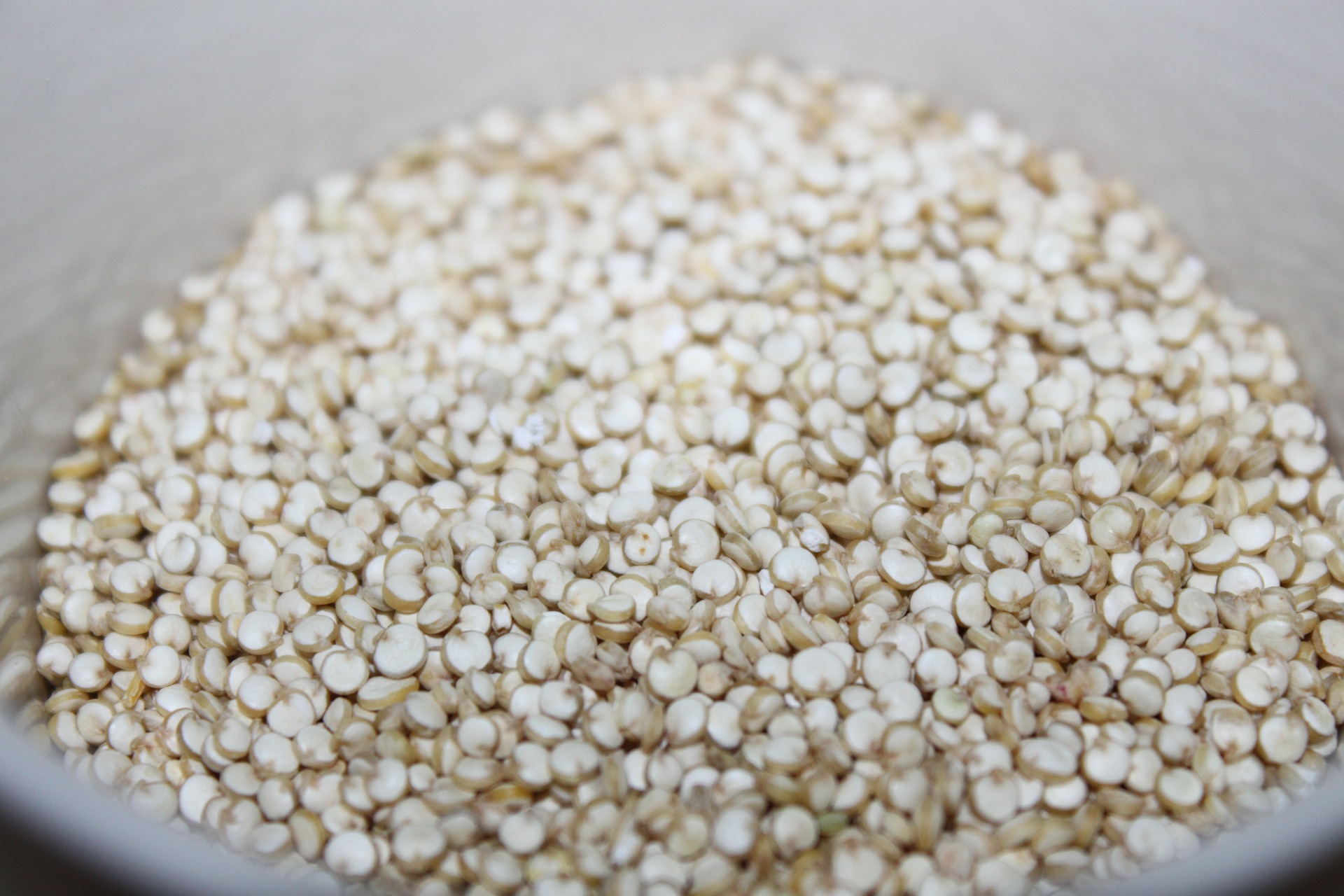From Quinoa to Buckwheat: The Gluten-Free Grains That Will Shake Up Your Diet?
In the ever-evolving world of nutrition gluten-free diets have taken center stage. Whether you're gluten-intolerant or simply looking to diversify your diet there's a world of grains waiting to be explored. For those in the 25+ age bracket get ready to embark on a culinary journey that promises not just taste but a wealth of health benefits. Let's dive into the world of gluten-free grains!
The rise of gluten-free diets isn't just a passing trend. With increasing awareness about gluten sensitivities and the benefits of diverse diets more people are seeking out gluten-free alternatives. But moving beyond the usual wheat barley and rye doesn't mean compromising on taste or nutrition. In fact it's quite the opposite!
Benefits of Gluten-Free Food
In recent years the term "gluten-free" has transitioned from a medical recommendation to a global health trend. But beyond the buzz there are genuine health benefits associated with a gluten-free diet especially for those with specific medical conditions. Let's delve into the advantages of embracing gluten-free foods.
- Digestive Health Improvement: For individuals with celiac disease consuming gluten can damage the lining of the small intestine leading to digestive discomfort and nutrient malabsorption. A gluten-free diet can alleviate these symptoms and promote better digestive health.
- Reduction in Chronic Inflammation: Some people may have non-celiac gluten sensitivity. While they don't have celiac disease they still experience bloating headaches and fatigue after consuming gluten. Adopting a gluten-free diet can reduce these inflammatory responses.
- Enhanced Energy Levels: Those sensitive to gluten often report feeling fatigued after consuming gluten-containing products. By eliminating gluten many individuals experience a noticeable boost in energy and overall well-being.
- Lowered Risk of Autoimmune Diseases: For individuals with celiac disease continued consumption of gluten can increase the risk of developing other autoimmune diseases. A strict gluten-free diet can help in reducing this risk.
- Promotion of Weight Management: While not a weight-loss diet going gluten-free can lead to a reduced calorie intake especially when high-calorie junk foods containing gluten are eliminated. This can indirectly support weight management.
- Improved Skin Health: Some individuals notice a correlation between gluten consumption and skin issues like acne rashes or eczema. While research is ongoing many report improved skin health after eliminating gluten.
- Mental Health Benefits: There's emerging evidence suggesting that a gluten-free diet might benefit some individuals with autism spectrum disorders ADHD and certain neurological conditions. Additionally some people report clearer thinking and reduced brain fog when they eliminate gluten.
- Diverse Nutritional Intake: Adopting a gluten-free diet often means exploring a variety of grains and foods that one might not have considered before. This can lead to a more diverse and nutrient-rich diet.
1. Quinoa: The Super Grain
Hailing from South America quinoa has been revered as the "mother of all grains" by ancient civilizations. Often mistaken for a grain quinoa is technically a seed but its culinary applications are vast. With its impressive nutritional profile and versatility quinoa has rapidly become a favorite among health enthusiasts and gourmet chefs alike.
Often mistaken for a grain quinoa is technically a seed. But don't let that fool you!
- Nutritional Profile: Packed with protein fiber and essential minerals quinoa is a complete protein meaning it contains all nine essential amino acids.
- Taste & Texture: Slightly nutty with a fluffy texture it's versatile and can be used in both savory and sweet dishes.
- Recipe Idea: Quinoa salad with roasted veggies feta cheese and a lemon vinaigrette. Perfect for a light lunch or dinner.
2. Buckwheat: Not Your Regular Wheat
Don't be misled by its name; buckwheat isn't related to wheat at all. This ancient grain which has been consumed for centuries in many parts of the world offers a unique flavor profile. Its hearty texture and rich nutritional content make it a must-try for anyone looking to diversify their gluten-free options.
Despite its name buckwheat is entirely gluten-free and unrelated to traditional wheat.
- Nutritional Profile: Rich in antioxidants fiber and protein buckwheat also promotes heart health and helps control blood sugar.
- Taste & Texture: Earthy and filling with a slightly chewy texture it's great for those looking for a hearty grain alternative.
- Recipe Idea: Buckwheat pancakes topped with fresh berries a dollop of Greek yogurt and a drizzle of maple syrup for a delightful breakfast.
3. Millet: The Ancient Staple
One of the oldest foods known to humanity millet has been cultivated in East Asia for over 10000 years. Its resilience to harsh weather conditions made it a staple for ancient civilizations. With a mild flavor and numerous health benefits millet is a grain that seamlessly fits into modern diets.
This tiny grain has been a staple in diets for thousands of years.
- Nutritional Profile: High in magnesium iron and B vitamins millet supports heart health and aids in digestion.
- Taste & Texture: Mild and slightly sweet it's versatile and can be used in a variety of dishes from breakfast to dinner.
- Recipe Idea: Millet porridge with cinnamon honey sliced almonds and a splash of almond milk. A comforting breakfast option.
4. Amaranth: The Aztec Power Grain
Once a revered staple in the Aztec diet amaranth was considered more precious than gold due to its health benefits. This tiny grain with its vibrant history is now making a modern-day comeback. Its peppery flavor and rich nutrient content make it a fascinating addition to contemporary dishes.
Once a staple in the Aztec diet amaranth is making a modern-day comeback.
- Nutritional Profile: Abundant in protein lysine and essential amino acids amaranth is also known for its anti-inflammatory properties.
- Taste & Texture: Nutty and slightly peppery it can be popped like popcorn or used in soups and stews.
- Recipe Idea: Amaranth grain bowl with roasted vegetables avocado slices and a creamy tahini dressing. A nutrient-dense meal option.
5. Teff: The Ethiopian Marvel
Originating in Ethiopia teff has been a foundational grain for thousands of years. This tiny grain which forms the base for the traditional Ethiopian bread injera is now gaining global attention. With its rich mineral content and subtle flavor teff is a delightful discovery for the culinary adventurer.
This tiny grain is a staple in Ethiopian cuisine and is gaining global popularity.
- Nutritional Profile: Rich in calcium iron and protein teff is also a great source of resistant starch a type of fiber beneficial for gut health.
- Taste & Texture: Mild with a hint of earthiness it's commonly used to make injera a type of flatbread.
- Recipe Idea: Teff flatbread served with spicy lentil stew and a side of pickled vegetables. A taste of Ethiopian cuisine.
6. Sorghum: The Versatile Wonder
Predominantly grown in Africa and Asia sorghum is a grain that has sustained populations for centuries. Known for its drought-resistant properties sorghum is not just agriculturally significant but also nutritionally rich. Its slightly sweet profile makes it a versatile ingredient in both savory and sweet dishes.
Popular in many global cuisines sorghum is a gluten-free favorite.
- Nutritional Profile: Packed with antioxidants fiber and essential nutrients sorghum is known to reduce inflammation and lower cholesterol levels.
- Taste & Texture: Slightly sweet and chewy it can be used in baking or as a rice substitute.
- Recipe Idea: Sorghum risotto with sautéed mushrooms garlic parmesan and fresh parsley. A delightful twist on the classic risotto.
Conclusion:
Embracing a gluten-free diet doesn't mean limiting your culinary experiences. With grains like quinoa buckwheat millet and more you're in for a delightful and nutritious journey. These grains not only offer a world of flavors but also pack a punch when it comes to health benefits. They're the unsung heroes of the culinary world waiting to be discovered and appreciated. So as you venture into the realm of gluten-free grains remember that each grain tells a story a tale of ancient civilizations traditional recipes and modern-day adaptations. Dive in experiment and let these grains redefine your diet in the most delicious way possible!








